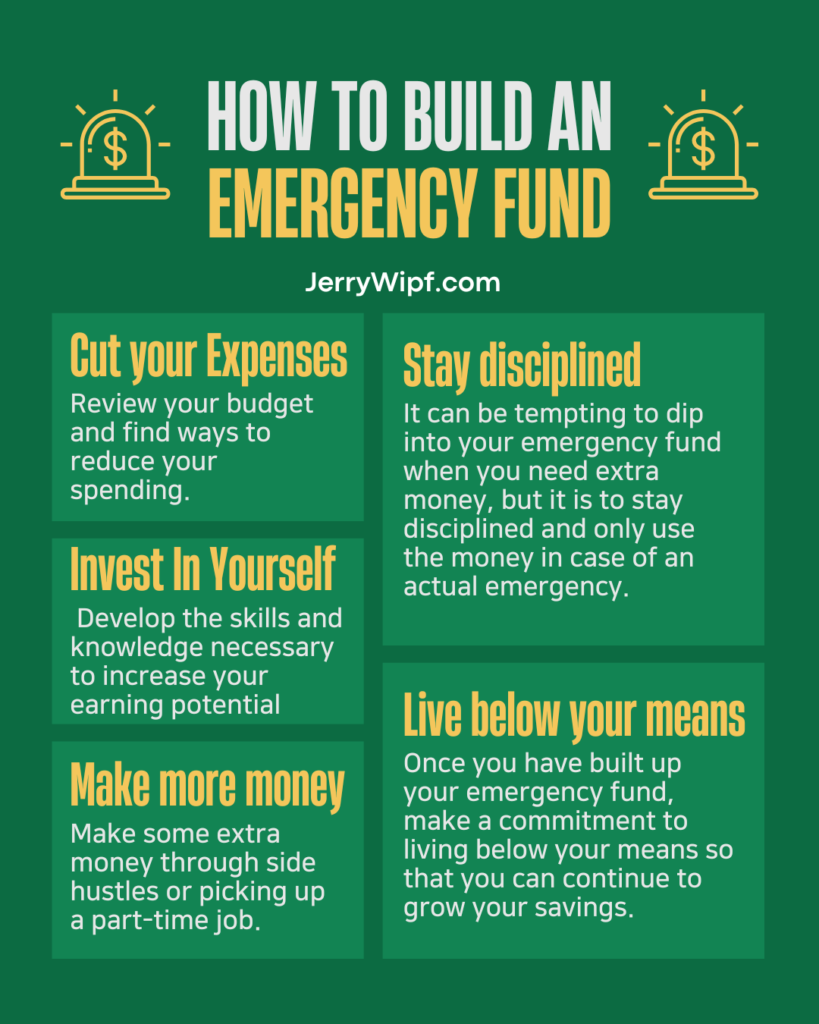|
On The Go? Simply Press Play Below!
Getting your Trinity Audio player ready...
|

Baby Step 3: Building Your Emergency Fund.
Financial security is a cornerstone of any successful money management plan, and the best way to achieve that security is by having a solid emergency fund.
Having an emergency fund to protect yourself from unexpected financial emergencies is crucial, and the best time to start building your own is now, regardless of your age or financial situation.
What is Baby Step 3?
Baby Step 3 is the third step in The seven-step program for achieving financial freedom. This step focuses on building an emergency fund, which is a critical tool for avoiding debt and protecting yourself from unexpected expenses. The goal of Baby Step 3 is to save 3-6 months’ worth of living expenses in a separate emergency fund account.
Why an Emergency Fund is So Important.
Life can be unpredictable, and unexpected expenses can arise at any time.
An emergency fund can give you the financial security you need to weather any storm.
The purpose of an emergency fund is to cover unforeseen expenses, such as a car repair or medical bill, without resorting to credit cards or other high-interest loans.
An emergency fund can also help you avoid the stress and anxiety that comes with financial uncertainty, allowing you to focus on other important aspects of your life.
How Much Should You Save?
I recommend saving 3-6 months’ worth of living expenses in your emergency fund. This amount should cover your basic living expenses, such as rent/mortgage, utilities, food, and transportation. The exact amount will vary depending on your income, expenses, and other financial obligations. To determine your monthly living expenses, add up all of your fixed expenses and average variable expenses, such as groceries and entertainment, for the past three months. Multiply that number by 3-6 to arrive at your emergency fund goal.
Personally, I maintain a 6-month emergency fund as I am highly risk-averse and have no desire to go back to struggling with finances. While the exact amount you should save may vary, I highly recommend setting a goal of at least 4 months’ worth of your monthly living expenses for your emergency fund. This will provide you with a solid financial safety net and help you avoid the stress and anxiety that comes with unexpected expenses.
How to Build Your Emergency Fund.
Building an emergency fund requires a lot of discipline and patience, but it’s worth the effort. Here are some tips for building your emergency fund:
- Set up a separate emergency fund account: It’s important to have a separate account specifically for your emergency fund, so you won’t be tempted to dip into it for other expenses.
- Make it a priority: Make saving for your emergency fund a top priority, even if it means cutting back on other expenses.
- Automate your savings: Set up automatic transfers from your checking account to your emergency fund account, so you won’t forget to save.
- Use windfalls to boost your fund: If you receive a bonus or tax refund, put the money directly into your emergency fund.
- Reassess your budget regularly: Regularly review your budget to ensure you’re on track to meet your emergency fund goal. If you need to adjust your budget, do so and continue to save.
Why Credit Cards Are Not a Substitute for an Emergency Fund.
I want to emphasize once again that the Baby Step program does not involve the use of credit cards. Remember we are changing our money mindset.
Credit cards can be a tempting solution to cover unexpected expenses, but they can also be a slippery slope to debt. Relying on credit cards to pay for emergencies can lead to high interest charges, late fees, and a debt cycle that can be difficult to break. Having an emergency fund, on the other hand, allows you to avoid credit card debt altogether and provides the peace of mind that comes with knowing you’re prepared for any financial emergency.
Conclusion
Building an emergency fund is a critical part of any financial plan, and Baby Step 3 is designed to help you achieve that goal. By saving 3-6 months’ worth of living expenses in a separate emergency fund account, you can protect yourself from unexpected financial emergencies and achieve greater peace of mind in your daily life.
Leave a Reply